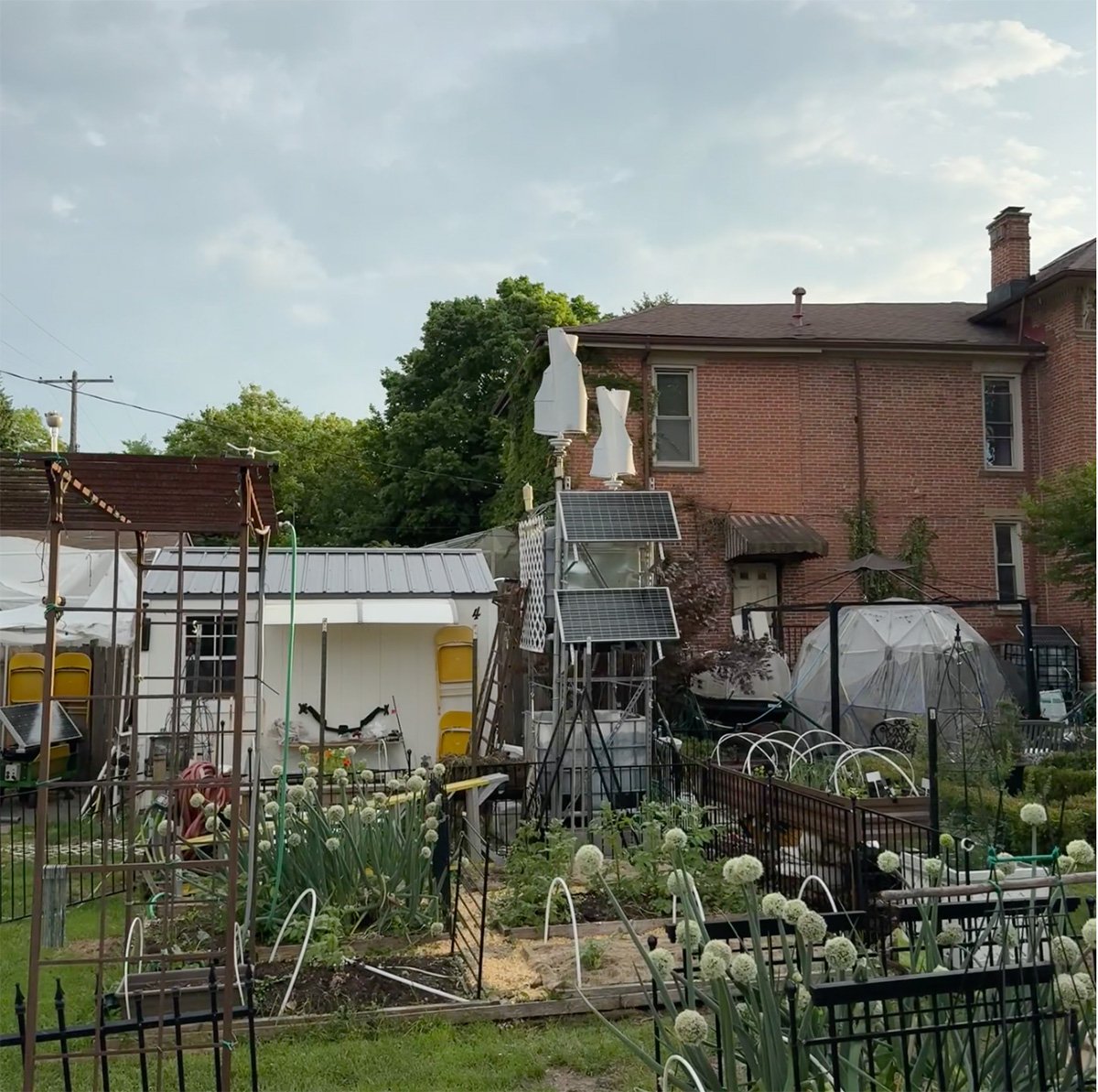The Age of Steel - Part 1
The old cedar picket fence
Steel fencing and steel raised beds here at Mezzacello Urban Farm today.
Slowly over the last six years I have replacing and updating mat garden infrastructure from wood to steel. This week is the dawning of The Age of Steel - Part 1. So why steel and not wood?
Plastic and wood are particularly vulnerable to the one two three punches of strong UV radiation, CO and O3 levels, and winds...
Jim Bruner
Originally it was not steel because poor boys have poor ways. We needed to build EVERYTHING at Mezzacello from scratch. Wood was easier to obtain, more adaptable and less expensive. It worked out at first.
Urban Location, Urban Decay
Over time the costs of wood kept mounting. The maintenance costs, the environmental degradation, and COVID supply and demand issues were making wood way more expensive than steel. So we started converting.
Wood is the ultimate in sustainability. There is no doubt about that. But wood did not evolve to withstand high levels of carbon monoxides that are present in an urban setting.
I can already hear people saying, well, steel din't evolve at all. Steel was invented. And that is kind of the point.
Thank You, Wikipedia!
Oxidation is one of the largest, expensive, and most persistent problems at Mezzacello Urban Farm. Plastic and wood are particularly vulnerable to the one two three punches of strong UV radiation, CO and O3 levels, and winds that are artificially amplified by steel and brick infrastructures and wind tunnels.
Steel Is More Sustainable in the Long Run
When you see photos of Mezzacello as recently as May of 2023, you will see the former PolyPropylene and aluminum greenhouse. That structure was doomed for the same reason the wooden structures and fences were: UV radiation, acidic atmospheric conditions, and wind.
In the case of the greenhouse it was rapidly degrading PP panels and the aluminum substructure was far too lightweight to withstand the gusts of wind in downtown Columbus. That is actually one of the many functions of the wind turbines and sheds at the southern edge of the property. They serve as a windbreak - and convert that wind into energy.
While steel is heavier than aluminum and wood, it has a substantial advantage in that is can be easier to maintain and repair than wood or plastic. It also withstands fire very well. Fire is the absolute most efficient way ro deal with weeds.
In addition, steel actually requires substantially less maintenance and has more benefits over wood. This part of the process was partially funded by the City of Columbus Parks and Recreation, The PAST Foundation, The Boyd Family Trust, a lot of your donations, and Richard and I eating a lot of beans to cut costs.
In the end, it will be worth it. Almost the entire bioreactor and water collection systems are steel now. That just leaves the raised bed planting boxes (Beds 1 - 6) that will have to be converted to steel - or a composite of pressure-treated wood and steel. I am still working on that.
Stay tuned. Maybe you will steal a glance of what's coming next. Or just keep following me.




